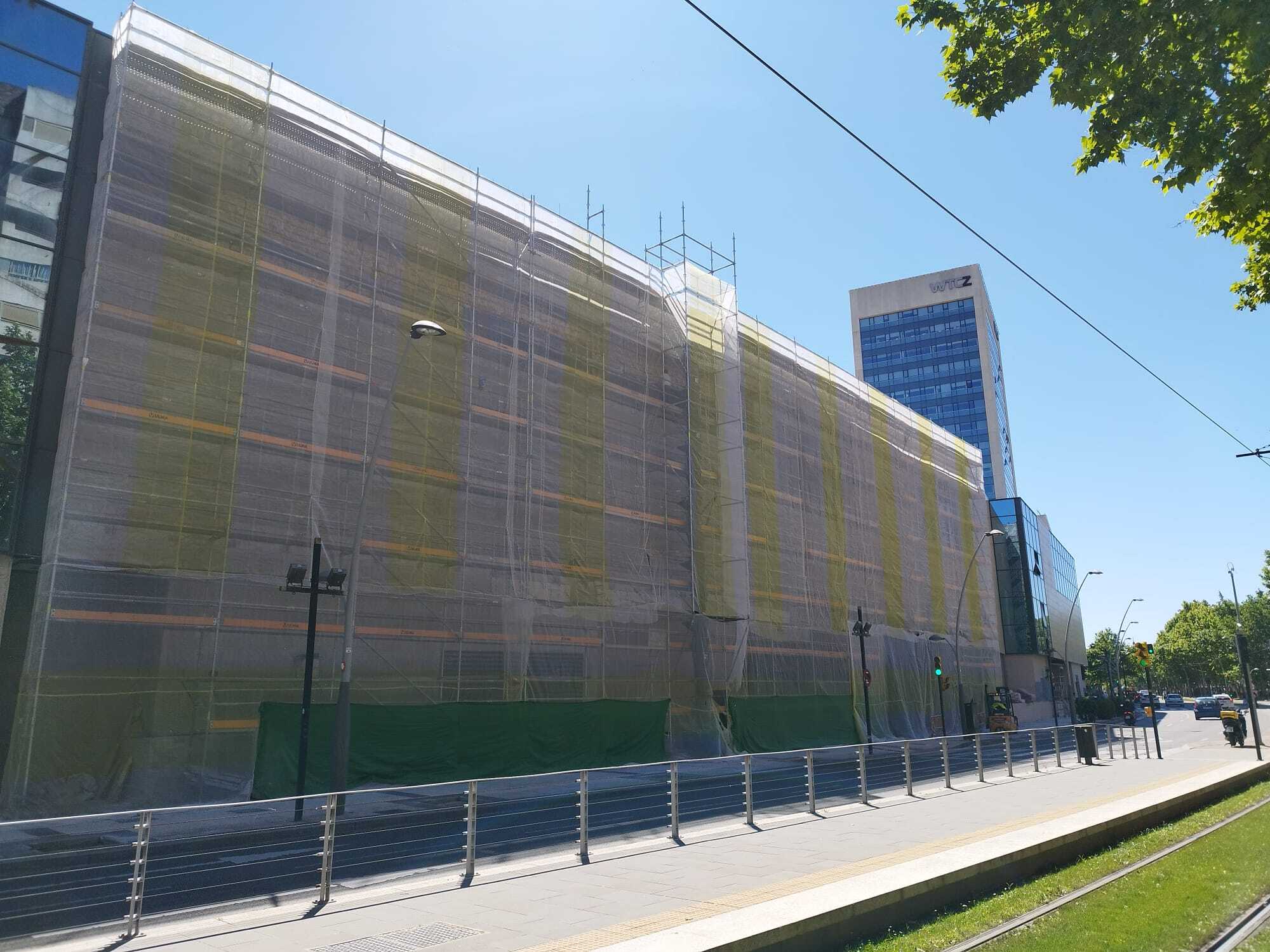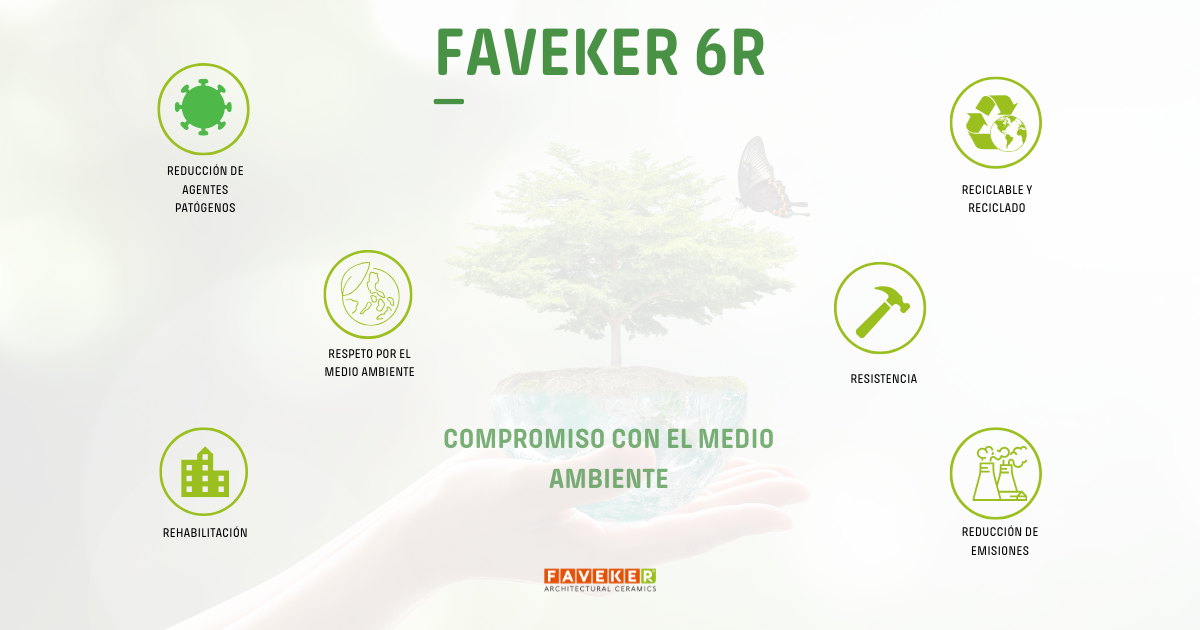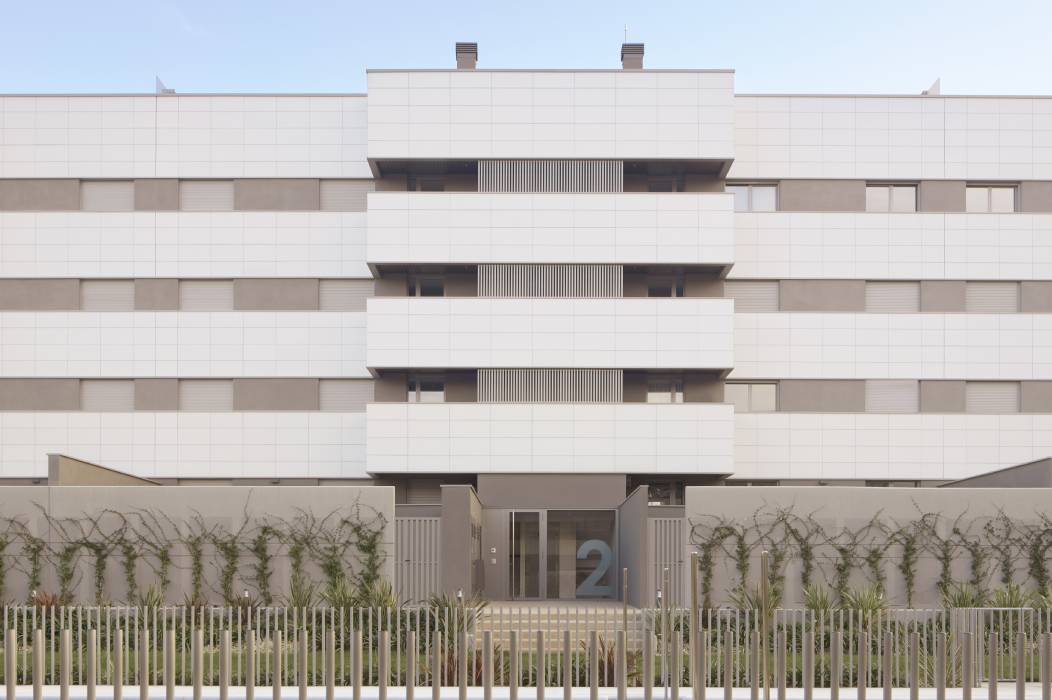
Why does thermal inertia help save energy in buildings?
Thermal inertia is a key concept in sustainable architecture as it performs a fundamental role in building energy efficiency. Understanding how it works and how it can be used when designing ventilated facades can make a difference in the thermal performance of a structure and the comfort people feel. We’re going to explore its importance and how it can help lower energy consumption in buildings.
What is thermal inertia?
Thermal inertia is the capacity a material has to store heat and the time it takes to retain and release it. This process means surfaces can absorb heat when temperatures are high and gradually release it when the degrees start dropping. In other words, a material with high thermal inertia works like a heat warehouse by making temperature variations inside buildings smoother. And this is why it’s so important to apply it to new architectural projects, such as renovation work, to achieve optimal behavior in buildings as concerns temperature changes.
What construction materials have the greatest thermal inertia?
The construction materials with the greatest thermal inertia are those which come from stone, such as concrete, brick and ceramic, as they’re able to moderate peaks in temperature, keeping the inside of a building cooler in summer and warmer in winter without an excessive need for artificial climate control systems. The thermal inertia of a construction material depends on three factors: the mass of the material, the density and specific heat.
Ceramic ventilated facades: systems that guarantee thermal control in buildings
The concept of thermal inertia has an impact on the efficiency of the materials used yet in a more broader sense, it has been positively proven in the comprehensive solution involving a ceramic ventilated facade. This is a system that not only offers the thermal benefits of ceramic as the cladding material, but also uses the air circulation within its chamber to ensure effective thermal control. Let’s take a look at some of the ways a ceramic ventilated facade achieves this.
Ventilated facades, effective in summer and in winter
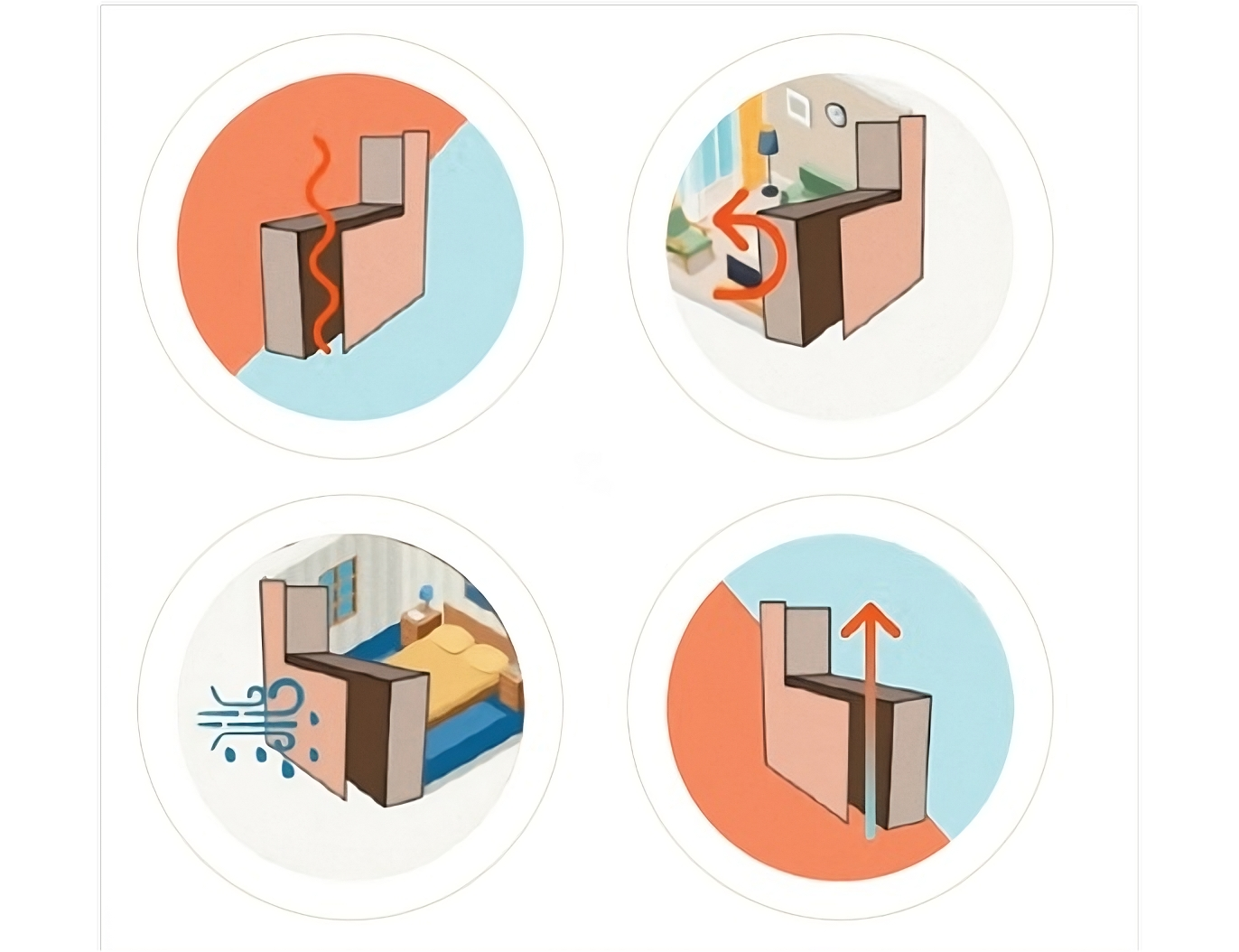
A ventilated air chamber works differently in summer and in winter, regulating the flow of air on the one hand and preventing the transfer of undesirable heat on the other.
- In summer, the sun’s rays directly shine on the cladding and not on the building. This means the air inside the chamber is hot, decreases in density and then rises by convection so cool air takes its place. This movement of air within the chamber occurs due to the chimney effect, which prevents an accumulation of heat on the facade. Added to this is the extra protection from the thermal insulation against atmospheric agents installed on ventilated facades.
- In winter, there are other conditioning factors, particularly because the solar radiation is not enough to achieve air movements like in summer. During this season, therefore, the facade works like a heat accumulator, and the air chamber helps achieve thermal stability in the system. In this case, the insulation helps by providing maximum accumulation and preventing the heat inside the building from being lost.
The chimney effect and thermal insulation: this is how the air chamber on a ventilated facade works
As seen before, the ventilated chamber on this type of facade is known for a phenomenon called the chimney effect, which is key to the heat in summer dissipating from the ventilated structure so it doesn’t penetrate into the building. On the other hand, the chamber fulfils another purpose in winter: it accumulates the heat inside the building and insulates it from the outside so it’s not lost.
Thermal inertia and energy efficiency: comfort and savings with a ventilated facade
Energy efficiency is defined as a building’s capacity to consume less energy by maintaining optimal conditions. A building designed to maximize thermal inertia can reduce dependence on artificial climate control systems, whether for heat or cold air, thus decreasing the energy consumption and carbon emissions to the point of achieving zero emissions buildings. Thermal inertia is a decisive parameter that makes it possible to create and transform buildings into more comfortable, sustainable and efficient structures.
As has been seen, a ventilated facade is the ideal solution for obtaining the comfort level expected of a building as well as savings on energy bills. As a result, buildings with ventilated facades self-regulate and are capable of reducing sudden temperature changes for thermal stability. This leads to considerable energy bill savings in winter by lowering the consumption of heating as well as in summer, by lowering the consumption needed to cool buildings.
Benefits of ventilated facades in terms of thermal comfort and energy efficiency
The thermal inertia found in ceramic ventilated facades is strategically key as a passive measure since it offers benefits as relevant as:
- Energy consumption savings and more efficient buildings
- A constant temperature throughout the day
- A feeling of comfort inside the building
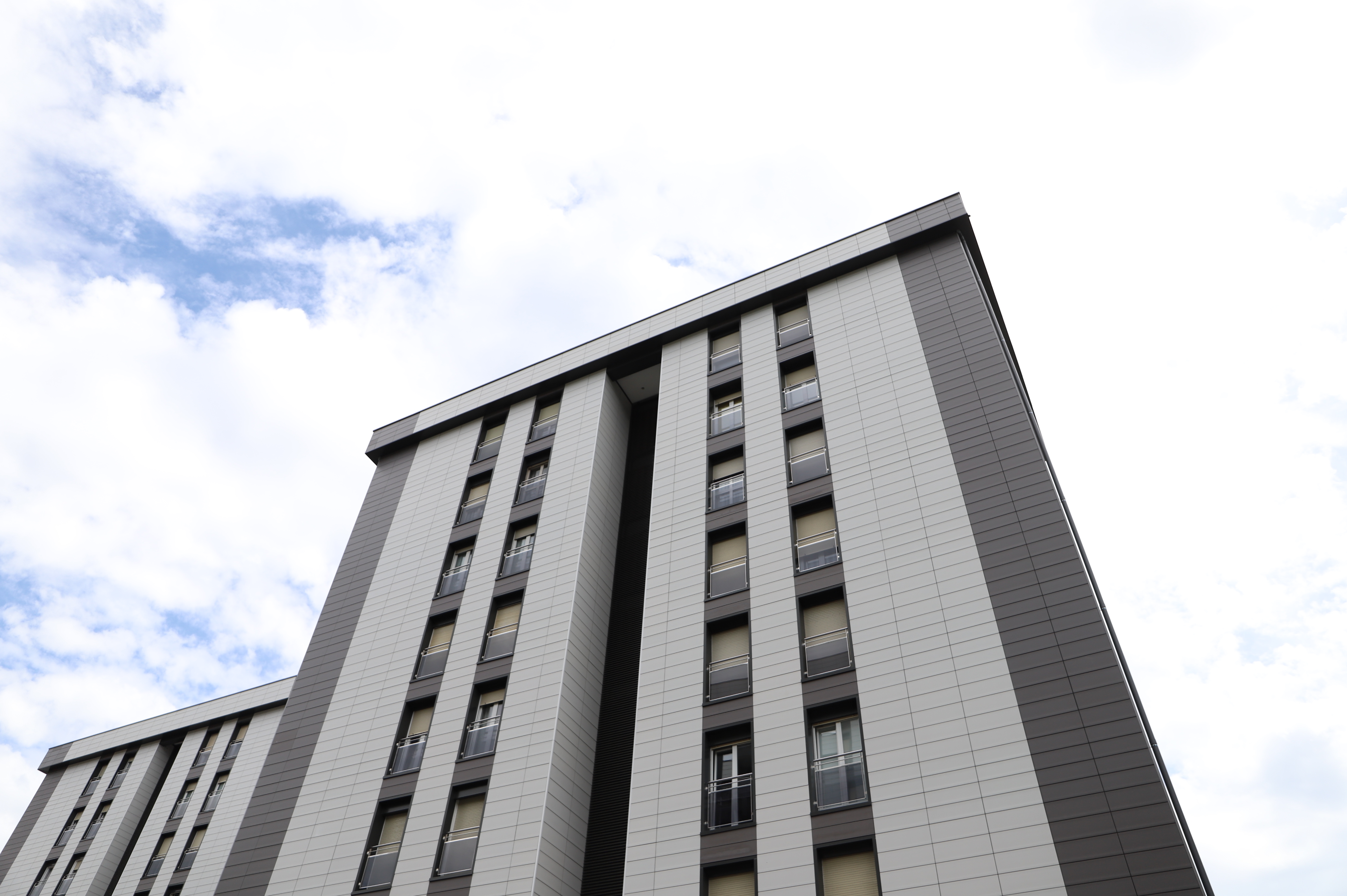
Since they work no matter the season, ventilated facades enable rigorous thermal control in adapting to specific needs. This system not only enables air circulation but also protects the building from external weather agents such as water, wind and moisture. A ventilated facade system along with a ceramic skin means the cladding not only helps increase the comfort of a building, but also enables significant energy consumption savings, thus enhancing its efficiency. A system that, as a whole, provides such useful and practical advantages to any building such as:
- An extended service life with low maintenance for the facade
- A sustainable commitment by using natural, recyclable and long-lasting materials
- High resistance to extreme weather conditions
- A solution for thermal bridges
The best solution for renovating a building that’s not very efficient all while solving the many problems associated with poorly insulated facades is installing a ceramic ventilated facade. Moisture, condensation and the cold wall effect are just some of the issues that can be overcome by replacing a facade with a ventilated one.
Sustainable buildings with ceramic ventilated facades
At FAVEKER®, we’re committed to sustainability from different perspectives: in construction solutions, in ceramic pieces and in the production process. We take advantage of the high thermal inertia of ceramic and the benefits of a ventilated facade system to build efficient, comfortable and sustainable buildings. If you need guidance for your project, contact us.

